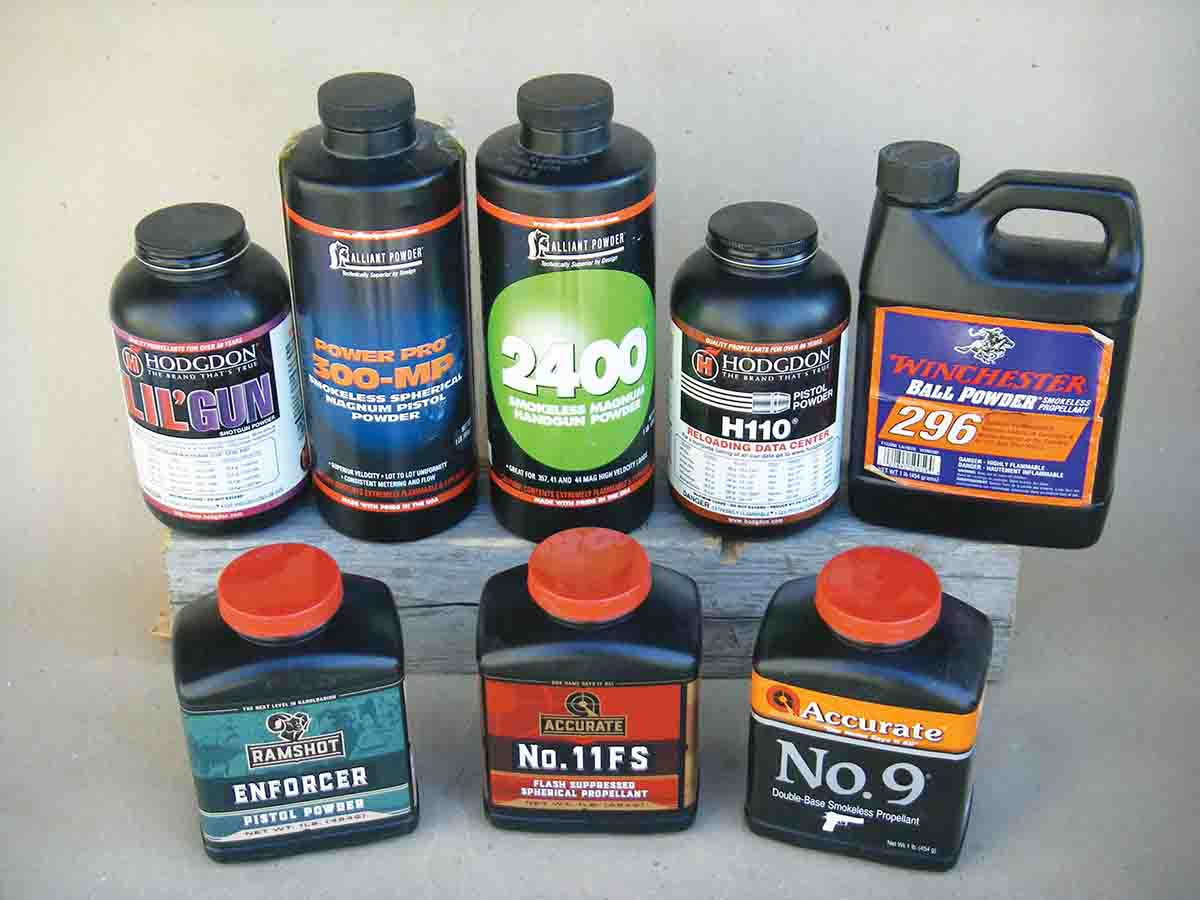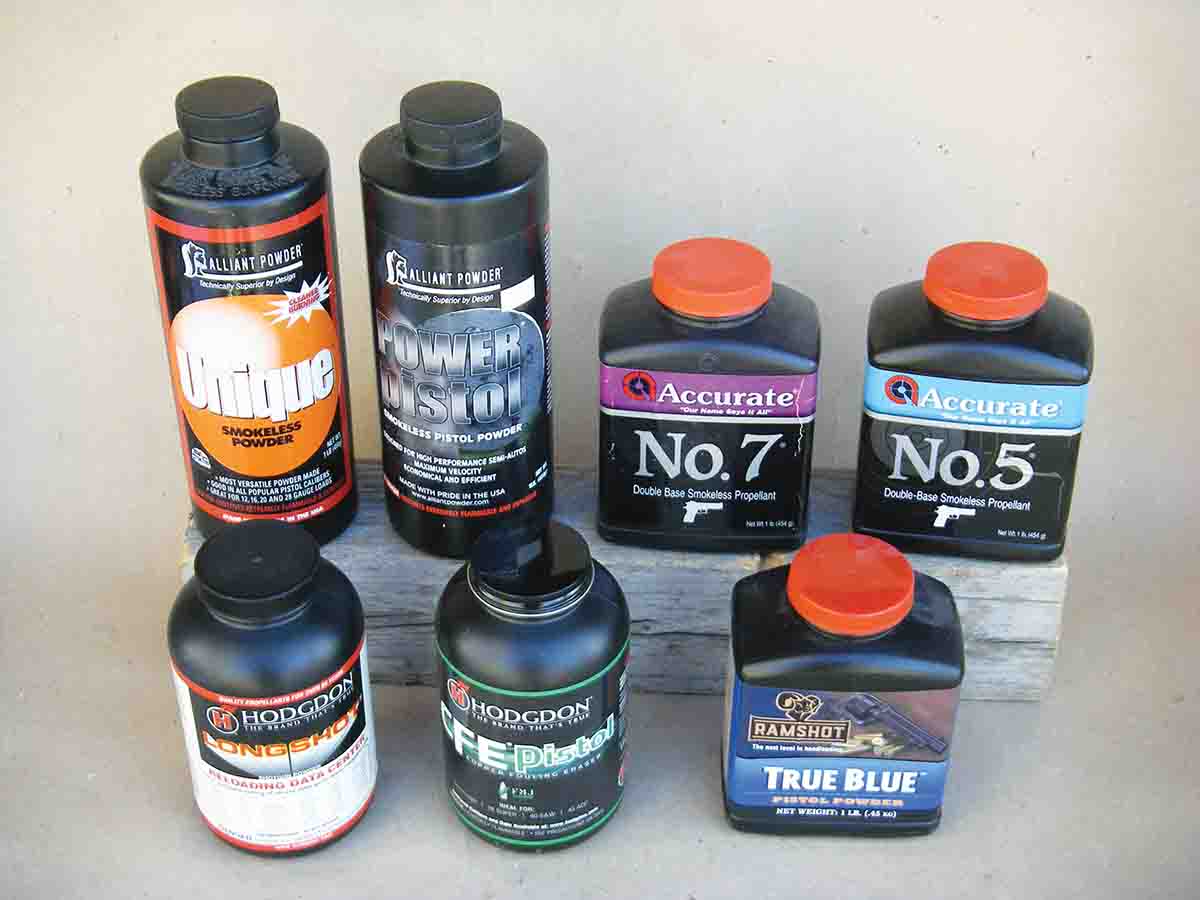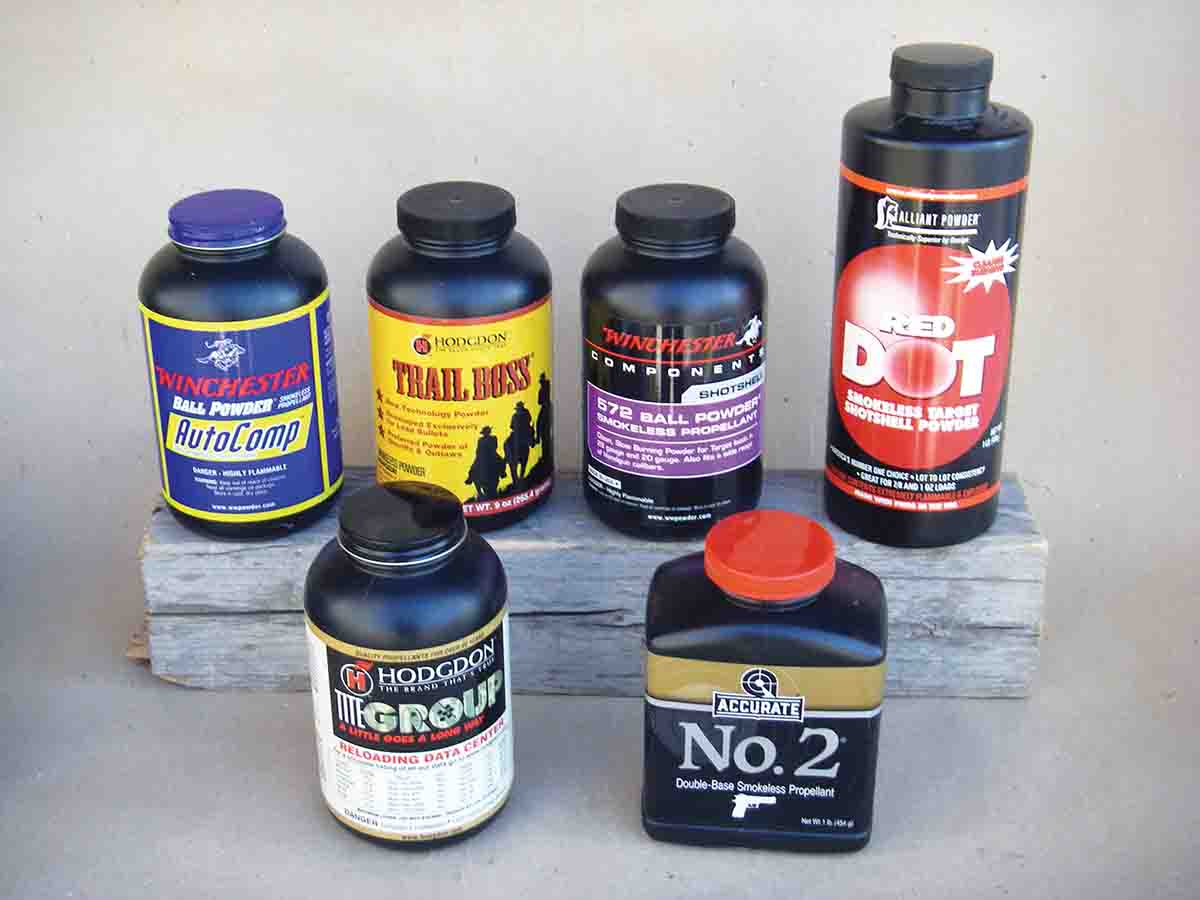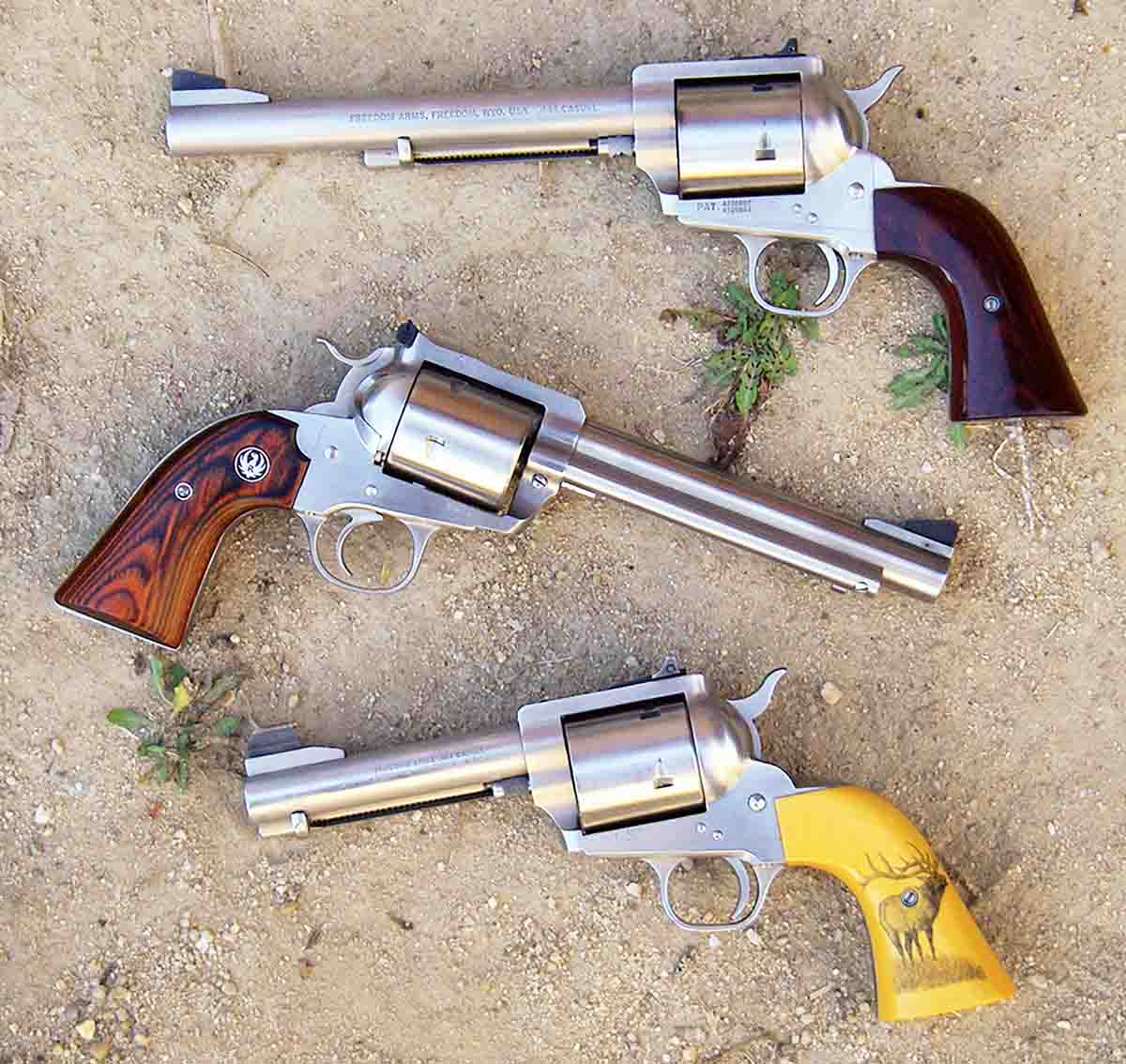.454 Casull
Handloading for Utility
feature By: Brian Pearce | February, 21




The .454 Casull became a Sporting Arms and Ammunition Manufacturer’s Institute (SAAMI) adopted cartridge in 1997 and finalized in 1998; however, its roots date back to the 1950s when a young Dick Casull was working for P.O. Ackley and conducting destruction testing of a variety of rifles and handguns, including the Colt Single Action Army. He soon discovered black-powder-era Colt revolvers (from 1873 through around 1900) were constructed of relatively weak steels (iron on early guns). While the post-1900-era guns offered notably greater strength, they could not handle the pressures that Casull wanted to push the .45 Colt to. He began making new cylinders and experimented with heat-treating methods in an effort to obtain greater strength. While he achieved respectable performance, the cylinder walls, or more specifically the bolt notches, were too thin.

He next converted a 1904-era Colt SAA to a wildcat “.44 Magnum,” prior to the commercialized .44 Remington Magnum introduced in late 1955 or early 1956. Casull used a six shot cylinder and line bored each chamber (the first revolver to be line bored). For cases, he used .30-40 Krag brass cut down to around 1.285 inches. The cylinder and frame were double heat-treated to a Rockwell C-scale over 40. His handloads pushed 240- and 250-grain bullets to 1,600 fps. Still wanting greater power, as early as 1954 Casull again started with a Colt SAA revolver and built a five-shot, line-bored, double heat-treated .45 Colt cylinder that offered much greater strength than any six-shot cylinder. He also changed the barrel twist rate to 1:24. With modern solid head cases, he used triplex loads containing Hercules Bullseye, Unique and 2400 compressed to achieve progressive burning and managed to push 255-grain Keith bullets to 1,550 fps. He called his new invention the “.454.”


The .454 remained proprietary for many years, but in 1979, Casull joined Wayne Baker and they formed Freedom Arms. The first production .454 Casull revolvers began shipping in 1983 and became known as the Model 83. They produced their own jacketed bullets (with hardened antimony cores and thick jackets) and manufactured proprietary ammunition that listed a 240-grain JHP at 1,875 fps, a 260-grain JSP at 1,800 and a 300-grain JSP at 1,600 fps, but each load actually exceeded those velocities from production revolvers.
It should be noted that the innovative Model 83 revolver offered several features that have now become standard on high-end custom guns. For example, it was the first production revolver to be line-bored with perfect chamber-to-bore alignment, resulting in outstanding accuracy, with many guns proving capable of MOA accuracy right out of the box. It is crafted from heat-treated 17-4 PH stainless steel and is incredibly strong. Due to the materials and design, it remains the strongest of all revolvers chambered in .454. Dimensions are held to a minimum. Cylinders lock incredibly tight with practically no side play or end-shake. The barrel/cylinder gap is generally held to around .001 to .002 inch. Chambers are bored to minimum dimensions with a mirror shiny finish and the throats generally measure .452 inch. In spite of its price tag, the Model 83 is a bargain.

To develop data, an early Freedom Arms Model 83 with a 7½-inch barrel was selected. This gun has digested many thousands of rounds and remains tight, accurate and is the ideal revolver to develop loads.

Due to its comparatively high operating pressures, fast and heavy recoil and other factors, the .454 offers a few challenges for handloaders. The first is priming. Early Freedom Arms cases featured large primer pockets which, with magnum primers, offered enough brisance to reliably fire any reasonable load. For several reasons, however, by early 1986 cases were changed to a small rifle primer pocket as it remains today. Even when using a magnum primer, some load combinations will fail to ignite correctly, which will leave a bullet stuck in the bore. However, proper loads will ignite reliably. This is one reason that suggested start loads should not be reduced.
I have tried all small rifle magnum primers in the .454, but always return to the Federal Gold Medal 205M. It always produces the lowest extreme velocity spreads and provides positive ignition. It’s cup easily handles the 65,000-psi pressures associated with maximum loads. As an honorable mention, the Remington 7½ BR was used in Freedom Arms factory loads and generally performs well.

In spite of the .454 case being constructed specifically for loads that generate 65,000 psi, after just two or three reloadings of full power loads, primer pockets tend to loosen and the resiliency of the case to retain a firm bullet crimp is compromised. A loosely-fitting primer can actually be dangerous, while a case that cannot hold its crimp will allow bullets to “walk” or “creep” (resulting in a longer overall length) under heavy recoil, which can cause bullets to project out of the end of the cylinder and tie-up the gun. I prefer overall cartridge lengths to be at least .020 to .025 inch less than flush with the end of a cylinder. This allows some bullet creep without jeopardizing reliability.

Jacketed bullet data is not interchangeable. For example, many jacketed bullets are designed for the comparatively low pressure .45 Colt cartridge and feature a soft lead core and thin jacket. Using these bullets in conjunction with full-house loads almost always results in erratic and higher than normal pressures. An example would be the Hornady 250-grain HP-XTP, which should only be pushed to around 1,300 to 1,500 fps (midrange loads) and with maximum pressures of around 35,000 psi. However, Hornady’s 240-grain XTP-MAG features a much heavier jacket and is designed specifically for full power .454 loads that generate up to 65,000 psi. Data should only be used as listed and without component substitutions.

Cast bullets should be sized to .452 inch. It should be noted that many H&I sizing dies have some taper (smaller at the bottom, larger at the top) and often the front driving band of long and heavyweight bullets, or bullets with a full caliber ogive just forward of the case, will not get fully sized down to .452. When loaded into a cartridge, the bullet will not fit into .452 inch throats, which prevents the cartridge from chambering. This can be remedied by adjusting the seating depth of the bullet in the H&I die to allow the front driving band to be fully sized. In some instances a new H&I sizing die may be required. Both plain-base and gas-checked bullets can perform very well with full-house loads; however, it is preferable to cast plain base versions with at least an 18-plus BHN and lube them with a high-quality, soft lubricant to prevent barrel leading when pushed to high velocities.
The accompanying data offers a variety of full power loads that duplicate factory load performance. Proven powders include Hodgdon H-110, Lil’Gun, Alliant 2400, Power Pro 300-MP, Accurate No. 9, Winchester 296 and Ramshot Enforcer. Alliant 2400 is an extruded powder while all of the other above mentioned powders are spherical. The starting charge weights should not generally be reduced, or ignition problems can occur.

Midrange loads are especially popular in the .454. They offer a useful level of power that is on par with, or exceeds the .44 Magnum and are capable of taking any game in North America when matched with correct bullets. They also provide substantially- reduced recoil, outstanding accuracy and decreased muzzle report. Handgun powders with a medium burn rate and that are the least sensitive to positioning are generally the best choices. Examples include Hodgdon Longshot, Accurate No. 5, Ramshot True Blue, Alliant Power Pistol, Unique and VV-N350.
Light target loads are still potent, as they duplicate or exceed .45 Colt factory load performance and offer enough power to take deer and game of similar size. When fired in a heavy revolver such as the Model 83, recoil is mild. Select loads were accurate, with a number of loads grouping under an inch at 25 yards. It should be noted that while .45 Colt cartridges can be fired in a .454, the same as .38 Specials in a .357 Magnum or .44 Specials in a .44 Magnum, better accuracy can be obtained by using similar loads assembled in the full-length case. Top powders for light loads include Hodgdon Titegroup, Accurate No. 2, Alliant Red Dot and several others. It is noteworthy (for reasons I won’t discuss here) that Freedom Arms does not recommend using .45 Colt cartridges in guns chambered for .454. Rather the company suggests using a “dual” cylinder chambered specifically in .45 Colt.
While the .454 is often praised for its accuracy, power and effectiveness on big game by recoil-hardened big-bore shooters, a rather common complaint is that it offers too much power, or more specifically, too much recoil! Through handloading, its versatility can be hugely improved and enjoyed by almost anyone. Light target and midrange loads are much easier on the shooter and the gun – and cost substantially less than full power factory loads. Like my old friend the late Dick Casull used to say, “Just because you have a high performance car doesn’t mean that you have to drive it full throttle all the time!”



.jpg)
.jpg)
.jpg)